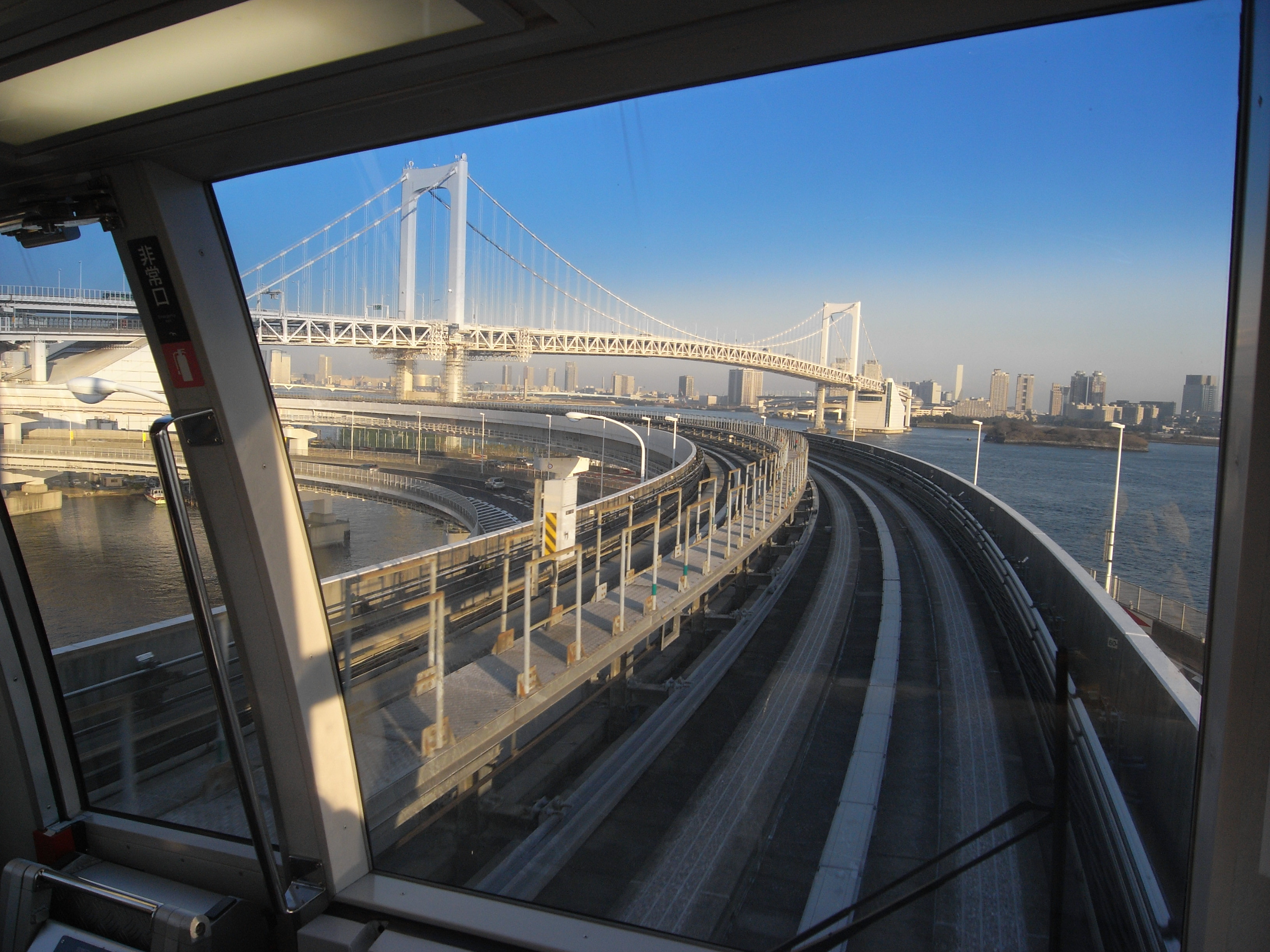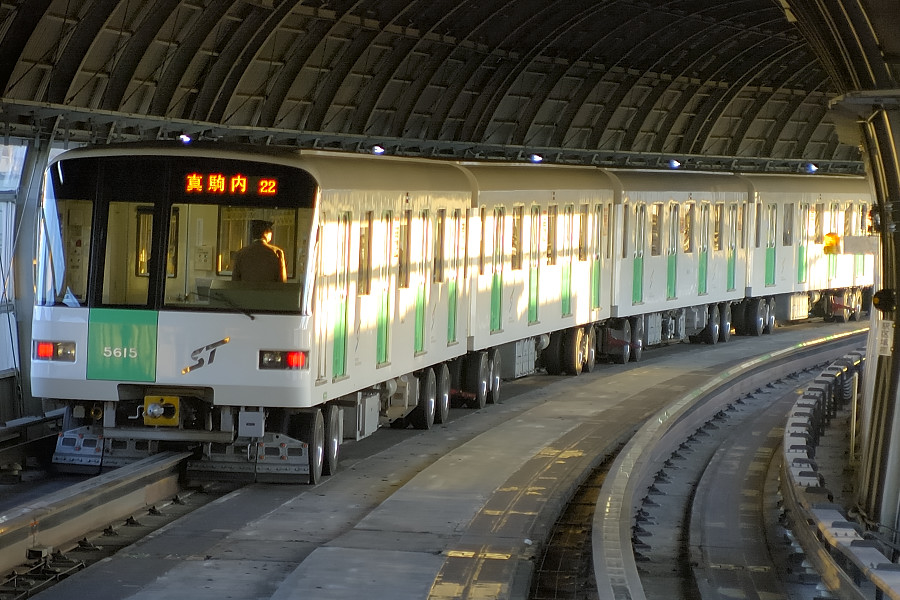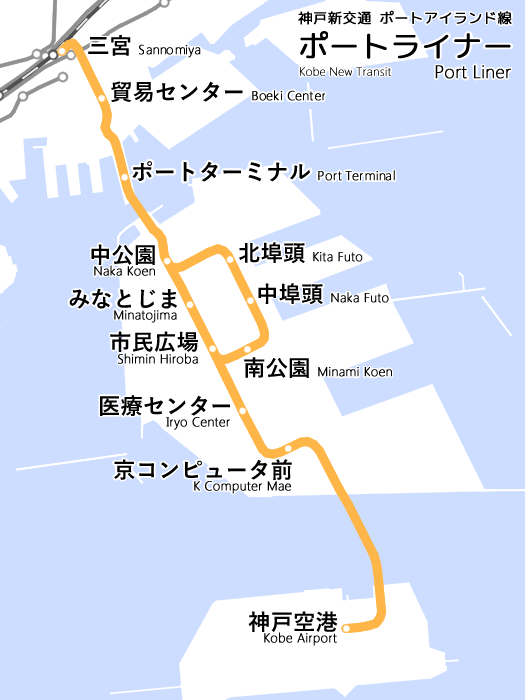|
Tokyo Waterfront New Transit Waterfront Line
, formerly the , is an automated guideway transit service operated by ''Yurikamome, Inc.'', connecting Shimbashi to Toyosu, via the artificial island of Odaiba in Tokyo, Japan, a market in which it competes with the Rinkai Line. The line is named after the black-headed gull (''yurikamome'' in Japanese), a common denizen of Tokyo Bay and the official metropolitan bird. History Before its 1995 opening, it was widely feared that the Yurikamome would end up as a multibillion-yen white elephant. The artificial island of Odaiba, which it serves, had been designed and constructed at prodigious expense before Japan's economic crash and, much like London's equally beleaguered Canary Wharf, there simply did not seem to be enough demand to support it. In the first few months of operation, ridership hovered around 27,000 passengers per day, only a little less than the predicted 29,000, but still far less than the 80,000 passengers needed to be profitable. However, in 1996, the Tokyo Metropo ... [...More Info...] [...Related Items...] OR: [Wikipedia] [Google] [Baidu] |
Automated Guideway Transit
An automated guideway transit (AGT) or automated fixed-guideway transit or automatic guideway transit system is a type of fixed guideway transit infrastructure with a riding or suspension track that supports and physically guides one or more driverless vehicles along its length. The vehicles are often rubber tired or steel wheeled, but other traction systems including air cushion, suspended monorail and maglev have been implemented. The guideway provides both physical support, like a road, as well as the guidance. AGT covers a wide variety of systems, from limited people mover systems commonly found at airports, to more complex automated train systems like the Vancouver SkyTrain. In the people mover role the term "automated people mover" (APM) is sometimes used, although this distinction is relatively rare because most people movers are automated. Larger systems span a variety of conceptual designs, from subway-like advanced rapid transit (ART) systems to smaller (typically tw ... [...More Info...] [...Related Items...] OR: [Wikipedia] [Google] [Baidu] |
Rainbow Bridge (Tokyo)
The is a suspension bridge crossing northern Tokyo Bay between Shibaura Pier and the Odaiba waterfront development in Minato, Tokyo, Japan. It is named ''Tōkyō Kō Renrakukyō'' (東京港連絡橋) as the official name in Japanese. It was built by Kawasaki Heavy Industries, with construction starting in 1987 and completed in 1993. The bridge is long with a main span of . Officially called the "Shuto Expressway No. 11 Daiba Route - Port of Tokyo Connector Bridge," the name "Rainbow Bridge" was decided by the public. The towers supporting the bridge are white in color, designed to harmonize with the skyline of central Tokyo seen from Odaiba. There are lamps placed on the wires supporting the bridge, which are illuminated into three different colors, red, white and green every night using solar energy obtained during the day. The bridge can be accessed by foot from Tamachi Station (JR East) or Shibaura-futō Station (Yurikamome) on the mainland side. Usage The Rainbow Bri ... [...More Info...] [...Related Items...] OR: [Wikipedia] [Google] [Baidu] |
Rubber-tyred Metro
A rubber-tyred metro or rubber-tired metro is a form of rapid transit system that uses a mix of road and rail technology. The vehicles have wheels with rubber tires that run on rolling pads inside guide bars for traction, as well as traditional railway steel wheels with deep flanges on steel tracks for guidance through conventional switches as well as guidance in case a tyre fails. Most rubber-tyred trains are purpose-built and designed for the system on which they operate. Guided buses are sometimes referred to as 'trams on tyres', and compared to rubber-tyred metros. History The first idea for rubber-tyred railway vehicles was the work of Scotsman Robert William Thomson, the original inventor of the pneumatic tyre. In his patent of 1846 he describes his 'Aerial Wheels' as being equally suitable for, "the ground or rail or track on which they run". The patent also included a drawing of such a railway, with the weight carried by pneumatic main wheels running on a flat board t ... [...More Info...] [...Related Items...] OR: [Wikipedia] [Google] [Baidu] |
Monorail
A monorail (from "mono", meaning "one", and "rail") is a railway in which the track consists of a single rail or a beam. Colloquially, the term "monorail" is often used to describe any form of elevated rail or people mover. More accurately, the term refers to the style of track.The term "track" is used here for simplicity. Technically the monorail sits on or is suspended from a guideway containing a singular structure. There is an additional generally accepted rule that the support for the car be narrower than the car. Etymology The term possibly comes from 1897, from German engineer Eugen Langen, who called an elevated railway system with wagons suspended the '' Eugen Langen One-railed Suspension Tramway'' (Einschieniges Hängebahnsystem Eugen Langen). Differentiation from other transport systems Monorails have found applications in airport transfer and medium capacity metros. To differentiate monorails from other transport modes, the Monorail Society defines a monorail ... [...More Info...] [...Related Items...] OR: [Wikipedia] [Google] [Baidu] |
Port Liner
The , commonly known as is an urban automated guideway transit (AGT) system in Kobe, Japan, operated by Kobe New Transit. Opened in 1981, the Port Liner was the world's first driverless urban transit system, a few years ahead of the VAL system used on the Lille Metro, which opened in 1983. The initial system linked Sannomiya Station, Kobe's main transit hub, to the man-made Port Island, covering a distance of 6.4 km with 9 stations. On February 2, 2006, the line was extended by 4.3 km to the new Kobe Airport, built on an artificial island near Port Island. Route As the map indicates, the present system consists of one straight line, originating at Sannomiya Station and terminating at Kobe Airport Station, and a loop attached to the middle of the straight line. The stations on the former are numbered with prefix "P" and on the latter (except those shared with the former) are with prefix "PL". Originally, before the 2006 extension to the airport, the loop section wa ... [...More Info...] [...Related Items...] OR: [Wikipedia] [Google] [Baidu] |
Kobe
Kobe ( , ; officially , ) is the capital city of Hyōgo Prefecture Japan. With a population around 1.5 million, Kobe is Japan's seventh-largest city and the third-largest port city after Tokyo and Yokohama. It is located in Kansai region, which makes up the southern side of the main island of Honshū, on the north shore of Osaka Bay. It is part of the Keihanshin metropolitan area along with Osaka and Kyoto. The Kobe city centre is located about west of Osaka and southwest of Kyoto. The earliest written records regarding the region come from the '' Nihon Shoki'', which describes the founding of the Ikuta Shrine by Empress Jingū in AD 201.Ikuta Shrine official website – "History of Ikuta Shrine" (Japanese) [...More Info...] [...Related Items...] OR: [Wikipedia] [Google] [Baidu] |
Rainbow Bridge From Yurikamome Front
A rainbow is a meteorological phenomenon that is caused by reflection, refraction and dispersion of light in water droplets resulting in a spectrum of light appearing in the sky. It takes the form of a multicoloured circular arc. Rainbows caused by sunlight always appear in the section of sky directly opposite the Sun. Rainbows can be full circles. However, the observer normally sees only an arc formed by illuminated droplets above the ground, and centered on a line from the Sun to the observer's eye. In a primary rainbow, the arc shows red on the outer part and violet on the inner side. This rainbow is caused by light being refracted when entering a droplet of water, then reflected inside on the back of the droplet and refracted again when leaving it. In a double rainbow, a second arc is seen outside the primary arc, and has the order of its colours reversed, with red on the inner side of the arc. This is caused by the light being reflected twice on the inside of the drople ... [...More Info...] [...Related Items...] OR: [Wikipedia] [Google] [Baidu] |
2020 Summer Olympics
The , officially the and also known as , was an international multi-sport event held from 23 July to 8 August 2021 in Tokyo, Japan, with some preliminary events that began on 21 July. Tokyo was selected as the host city during the 125th IOC Session in Buenos Aires, Argentina, on 7 September 2013. The Games were originally scheduled to take place from 24 July to 9 August 2020, but due to the global COVID-19 pandemic, on 24 March 2020, the event was postponed to 2021, the first such instance in the history of the Olympic Games (previous games had been cancelled but not rescheduled). However, the event retained the ''Tokyo 2020'' branding for marketing purpose.Multiple sources: * * * It was largely held behind closed doors with no public spectators permitted due to the declaration of a state of emergency in the Greater Tokyo Area in response to the pandemic, the first and so far only Olympic Games to be held without official spectators. The Games were the mos ... [...More Info...] [...Related Items...] OR: [Wikipedia] [Google] [Baidu] |
Metal Fatigue
In materials science, fatigue is the initiation and propagation of cracks in a material due to cyclic loading. Once a fatigue crack has initiated, it grows a small amount with each loading cycle, typically producing striations on some parts of the fracture surface. The crack will continue to grow until it reaches a critical size, which occurs when the stress intensity factor of the crack exceeds the fracture toughness of the material, producing rapid propagation and typically complete fracture of the structure. Fatigue has traditionally been associated with the failure of metal components which led to the term metal fatigue. In the nineteenth century, the sudden failing of metal railway axles was thought to be caused by the metal ''crystallising'' because of the brittle appearance of the fracture surface, but this has since been disproved. Most materials, such as composites, plastics and ceramics, seem to experience some sort of fatigue-related failure. To aid in predicting ... [...More Info...] [...Related Items...] OR: [Wikipedia] [Google] [Baidu] |
Tokyo Big Sight Station
is a station on the Yurikamome Line in Kōtō, Tokyo, Japan. It is numbered "U-11". Station layout The station consists of an elevated island platform. Platforms History The station opened on 1 November 1995, with the name . On 16 March 2019, it was renamed to its current name. Surrounding area *Tokyo Big Sight , officially known as , is a convention and exhibition center in Tokyo, Japan, and the largest one in the country. Opened in April 1996, the center is located in the Ariake Minami district of on the Tokyo Bay waterfront. Its most iconic feature i ... References External linksOfficial information site {{DEFAULTSORT:Tokyo Big Sight Station Railway stations in Tokyo Yurikamome Railway stations in Japan opened in 1995 ... [...More Info...] [...Related Items...] OR: [Wikipedia] [Google] [Baidu] |
Tokyo International Cruise Terminal Station
is a station on the Yurikamome Line in Kōtō, Tokyo, Japan. It is numbered "U-08". Station layout The station consists of an elevated island platform. Platforms History The station opened on 1 November 1995, with the name . On 16 March 2019, it was renamed to its current name. Surrounding area * *Museum of Maritime Science The Museum of Maritime Science (船の科学館, ''Fune-no-kagakukan'') is a marine science museum located in Higashiyashio, Shinagawa, Tokyo on Odaiba island, Japan. Exhibits include Japanese boats, items related to the navy, shipping industry, f ... References External linksOfficial information site {{DEFAULTSORT:Tokyo International Cruise Terminal Station Railway stations in Tokyo Yurikamome Railway stations in Japan opened in 1995 ... [...More Info...] [...Related Items...] OR: [Wikipedia] [Google] [Baidu] |


.jpg)





.jpg)
